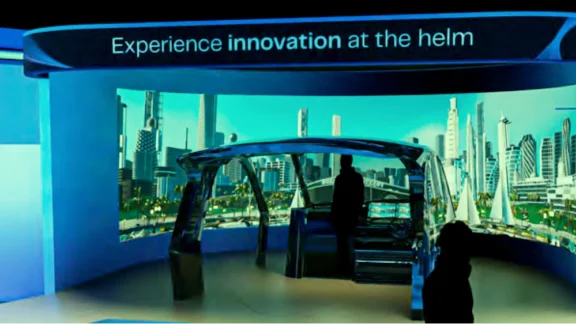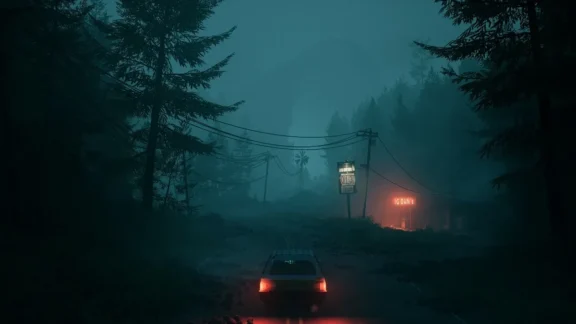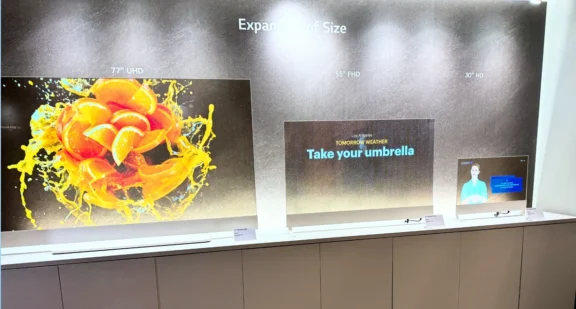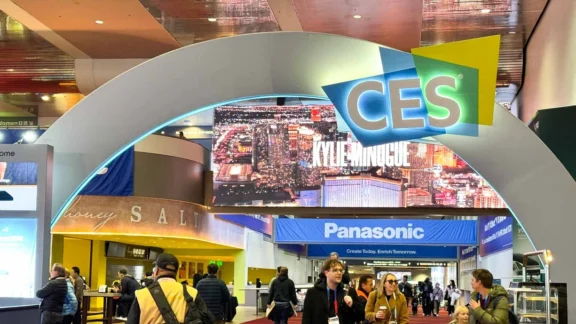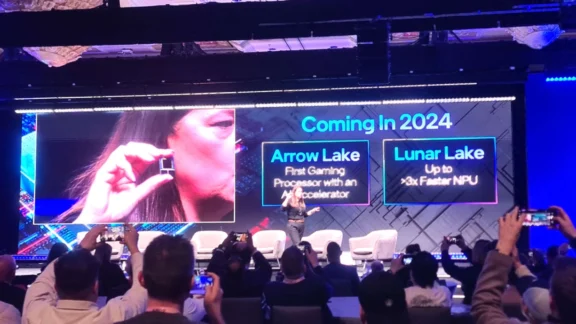Forget the latest PlayStation or incremental car technology. This company is showing what the boating revolution looks like now with auto-docking, electric outboards, e-foils, and inexpensive boats.
I talk about this all the time, but I’ve long been searching for the perfect road trip game. Something that captures the calmness of a long drive and the vibes of a late-night Waffle House. One day. One day… It’s that search that got me interested in Pacific Drive. Okay, it’s sort of like driving a jalopy through the Chernobyl Exclusion Zone, as shown in S.T.A.L.K.E.R., but there’s still room for Waffle House vibes. Having played a bit of it, I’m going to have to say that I’m probably going to still be left searching, but that’s not to say that Pacific Drive doesn’t have some interesting things going for it. Screenshot by Destructoid Pacific Drive has you transporting a package near the Olympic Penninsula where a promising technology was being experimented with. However, things started going wrong and getting weird, so the government walled up the area, establishing the Olympic Exclusion Zone. Then things just got worse, so they pulled everyone they could out of there and sealed the exits. That shouldn’t matter to a delivery person like you, but while taking a short detour, you’re sucked into the zone. Once inside, you’re exposed to the area’s weirdness. Things float in midair, pockets of energy sap the life out of you, and everything just seems unstable. Trying to escape, you find a station wagon, and immediately after you’re contacted by a pair of scientists who still reside in the zone. They tell you the car is not normal either. There hasn’t been a working vehicle in the zone for some time, and you’re most likely driving an entity known as a remnant. That’s kind of your lot. In the parts of Pacific Drive I played, you generally love on your station wagon while scientists force you into dangerous experiments. You’re told that the remnant takes different forms, but whoever finds it inevitably falls in love with it until they go insane. It’s a pretty convincing setup since the car is the game’s central mechanic, so you’ve got little agency beyond caring for it. The demo doesn’t go much deeper into the narrative than that. Your goal is to continually improve your car while scientists tell you what to do. https://youtu.be/sfGnxh0PNL8?feature=shared The gameplay loop involves working on your car in the garage, picking a route, and then trying to survive to your destination while looting along the way. Each journey is separated into smaller open-world nodes that are randomly generated. These are pockets of stability. Everywhere else is constantly in flux, with matter being unable to maintain its shape, but these areas are relatively safe… for now. To traverse these areas, you either need to navigate to an open gate, or you can make one yourself using LIM taken from anchors around the map. Once you have enough LIM, you can trigger a collapse in the area’s stability and flee back to the garage through a column of energy. However, it’s very important that you loot as much as possible. You can dismantle car wrecks, clear out houses, or rob abandoned gas stations, but you’ll need as much as you can get your hands on to upgrade your car. While doing this, you need to be careful because while I didn’t encounter any entities that were distinctly aggressive, the environment is always hazardous. Mannequins that litter the road will explode, pillars of rock will rise from the ground and launch you into the air, and weird balls of garbage will grapple onto your car and drag it into the wilderness. All of this is part of a random generation, so these aren’t scripted encounters. It leads to a unique lack of trust in the environment. You’re constantly watching the readings on your instruments and keeping your head on a swivel as you watch for hazards that could complicate your journey. Screenshot by Destructoid I may have over-looted, but Pacific Drive didn’t really try to stop me. I had to park my car in front of every house that I could to allow myself to rifle through the underwear drawer for scrap. Not that being extra prepared didn’t have its benefits, but, in retrospect, I feel like I might have been inefficient. I think that may have slowed things down too far. At times, Pacific Drive began to feel like many other open-world games. This meant the game didn’t really feel much like a drive and more like pushing a grocery cart between dumpsters. It was like The Long Dark or, more uncharitably, a Ubisoft title, where every structure I entered had to be emptied into my pockets for gear that I may never, ever need. I think maybe if I just spent more time looking for what I needed, I may have gotten my empty stretches of weirdly hostile road. On the opposite end of that, however, are the storms. If you spend too much time on a node, your map will begin to be overwhelmed by a big circular barrier, yellow at first, before being followed by red. Storms set in, initially making things more dangerous before wearing through your car protection and eventually killing you. You have to make your escape before that happens, which leads to panicked drives as reality disintegrates around you. One of my most memorable moments was weaving through the forests and rolling into a gateway at around 2% health and escaping by the hair on my neck. Screenshot by Destructoid I mostly enjoyed my time with Pacific Drive, but I’m concerned that the unique aspects of it might get drowned out by trite looting and crafting that we’ve seen too many times before. Upgrading your car is fun, but if that aspect outweighs the actual driving, then I think it will cheapen the entire experience. Nonetheless, I’m excited to get my hands on more of Pacific Drive. In preparation for this write-up, I fired the demo up again to refresh myself on the narrative details of the introduction, and I had trouble putting it down again. There is a lot that it does well, and it’s clear to see where its heart lies. Maintaining the station wagon is really enjoyable, I just hope we’re doing the bulk of that out on the road rather than in the garage. Pacific Drive is out on February 22, 2024 for PS4 and PC. The post Pacific Drive is a harrowing road trip on the edge of reality appeared first on Destructoid.
The ecommerce industry has experienced significant shifts, with consumer spending habits and delivery logistics at the forefront of these changes.
LG Display showed off three transparent OLED displays at CES 2024 to show how we might view and interact with content in the future. And it looks pretty promising.
Impact Investing: There’s a surge in topical investment areas driven by the generational consciousness, with “impact investing” being a prominent category.
As conversational AI transforms the sales landscape, it’s worth looking at the benefits it can offer and the potential challenges that must be overcome.
A newly-granted patent shows how Apple has at least designed a stand that is specifically for charging an iPhone during filming, and connecting to a gimbal.Two views of Apple’s proposed MagSafe camera mount for iPhonesThere was no sign of such a MagSafe charging camera stand when Apple filmed its Scary Fast event on iPhones in 2023. But as early as 2021, its designs were sufficiently advanced that Apple applied for a patent for it.Now that patent, “Adapter For Charging and Stabilizing Cameras,” has been granted. In it, Apple claims that some iPhone “cameras have such a high quality that they are replacing traditional single-lens reflex (SLR) and other cameras in many applications.” Continue Reading on AppleInsider | Discuss on our Forums
CES 2024 day 2 is here, and that means there are loads more announcements to enjoy. Here are 9 you can’t miss.
A Duolingo spokesperson said about 10% of its contractors were “offboarded.” As reported by Bloomberg, they explained, “We just no longer need as many people to do the type of work some of these contractors were doing. Part of that could be attributed to AI.”Read Entire Article
Little Lunar will be launching in low-power, lightweight laptops. Lovely.


